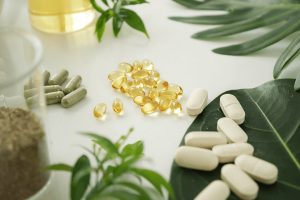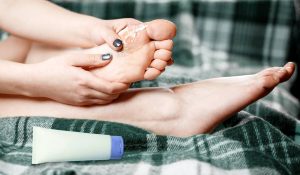
Diabetes Sick Days
With winter just around the corner, we know that sick days are approaching! Sick days can be extremely stressful, but diabetes can make them a little more complicated. We’re here to talk about how you can be prepared for a sick day, what to look out for, and how to maintain your health.
One of the best ways to keep from getting sick is to be prepared and safe.
- Wash hands frequently and avoid touching your face
- Stay home if you’re feeling sick – there’s no need to spread sickness–play it safe!
- Get enough sleep
- Eat healthy, be physically active, & avoid smoking
- Stay up to date on vaccines – check out the CDC’s updated list for people with diabetes
- Try to maintain your goal ranges for blood sugars and A1C, as best as you can
Here’s how to manage diabetes during a sick day:
Unpredictable Blood Sugar Levels
Blood sugars can be very unpredictable on sick days. This could be due to stress, which can increase sugar levels. On the other hand, diabetes medications can lead to a decrease in sugar levels because most people don’t eat as much when they are sick. This mainly occurs from medications, such as glyburide, glipizide, glimepiride, and insulins. However, there are also some medications, such a cough syrup that could increase blood sugar levels. Therefore, it’s very important that you are monitoring your blood sugar levels often on sick days. It’s recommended to check your levels every 2-3 hours if you’re on insulin, and 2-4 times daily if you’re not using insulin. If you’re using intermediate or long-acting insulin it can be helpful to speak with your provider, to see if any dose adjustments should be made on sick days.
Ketone Levels
Ketones can also fluctuate during sick days. Ketones are chemicals that the body creates when it breaks down fat to use for energy when glucose is no longer available. Ketone fluctuations can be due to several different factors, such as changes in insulin, diet, or certain medications (e.g., Invokana, Farxiga, and Jardiance). Monitoring ketones is very important to make sure that you are not in diabetic ketoacidosis. Monitoring can be done by using a urine test or a blood test. The urine test may be much easier to use and check often. It is recommended to check for ketones every 4 hours or during urination.
Diabetes Sick Day Kit
Last but not least, make a sick day kit. This way there’s no need to gather all the things you may want when you’re not feeling your best and may have low energy. A sick day kit can just be a bag with everything you will need or want on a sick day and have it easily accessible. Here’s what we suggest including in a sick day kit.
- Glucose tablets, glucose powder, or smarties
- Insulin – if you are using insulin
- Blood sugar monitor
- Glucagon – if you’re on long or short-acting insulin
- Urine ketone strips
- Thermometer
- Over-the-counter meds
- Food & drinks that you typically eat when you’re sick
S.I.C.K.
There’s a lot of information to keep in mind, when thinking about sick days. Here’s an acronym that can help you remember the main points!
Sugars: check your blood sugars often
Insulin: take your insulin as usual, unless instructed by your doctor
Carbs: make sure you get enough carbs and fluids in your diet
Ketones: check your ketones often
Make sure to consult with your doctor on any changes you may need to make on your sick days. Check out out our Facebook Live and the CDC website for more tips and information on sick day management!
Summary
Sick are never fun. But they can be a little bit better if you’re prepared. Remember these four easy steps: check your blood sugars often, take your insulin, make sure you have enough carbs and fluids in your diet, and make sure to check your ketones!
Disclaimer Statement: This is for educational purposes only and not intended as medical advice. For individual medical advice, contact your healthcare practitioner.





